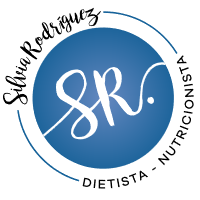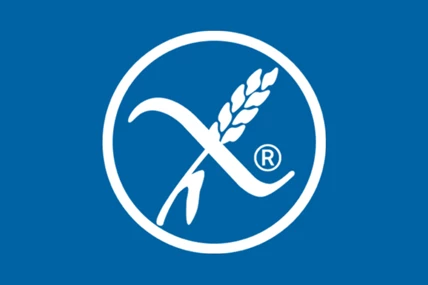The Association of Coeliacs in Europe (AOECS) is the umbrella organisation representing the various national coeliac associations in Europe. Currently, the European Licensing System for gluten-free labelling is regulated by AOECS, with 38 members across Europe.
European Licensing System (ELS) or “Herringbone Barred”
The “Herringbone” label certifies that a product contains less than 20 parts per million (<20 ppm) of gluten, according to the regulations of the Food Code. This certification guarantees safety for people following a gluten-free diet (GFD). In Spain, the FACE is one of the associations authorised to grant this certification.
The European Licence symbol or “Crossed Grain Trademark” can be used on packaging, branding, promotional materials and posters related to the certified product. There are no restrictions on the colour of the symbol.
COELIAC DISEASE
Coeliac disease (CD) is a systemic immune disorder triggered by the ingestion of gluten and related proteins, affecting genetically susceptible individuals. It is characterised by varied clinical manifestations linked to gluten ingestion, the presence of specific autoantibodies, HLA (human leukocyte antigen) DQ2 (DQ2.5 and/or DQ2.2) and/or DQ8 haplotypes, and enteropathy.
CD affects all ages, with a female to male ratio of 2:1. Although more than 70% of new diagnoses occur in people over 20 years of age, the prevalence of CD is around 1% in Western countries. The presentation in children varies according to the age of diagnosis. Digestive symptoms and growth retardation are common. In adults, the presentation is heterogeneous, with non-specific gastrointestinal symptoms. Diagnosis requires a high index of suspicion due to heterogeneity in presentation patterns.
GLUTEN-FREE DIET (GFD)
The fundamental treatment of coeliac disease (CD) is the adoption of a gluten-free diet (GFD). To effectively implement a GFD, wheat must be excluded from the diet, including varieties such as durum wheat, spelt and khorosan; triticale (cereal obtained by crossing wheat and rye); barley, rye or their hybrids, as well as derived products. Although oats can be included in the diet of most people with CD, there are concerns about possible contamination with wheat, rye or barley during transport, storage and processing.
It is essential for those newly diagnosed to understand that the basis of the DSG focuses on fresh and minimally processed foods, which do not contain gluten at source. Gluten-free foods are listed below, although they are not necessarily recommended in a healthy dietary pattern:
- Cereals and pseudocereals: rice, corn, maize, tapioca, millet, sorghum, teff, buckwheat and quinoa (grains, unground).
- Sweeteners: sugar, honey and sweeteners.
- Meat and offal: fresh and frozen, jerky, cured ham and extra quality cooked ham.
- Fruits: fresh, in syrup, compote and dried (except dried figs, which may contain gluten).
- Dried fruit: raw (avoid fried or roasted, which may contain gluten), with and without the shell.
- Fats: oil and traditional butter.
- Vegetables and tubers: fresh, frozen and canned in their natural state.
- Drinks: coffee, infusions, soft drinks and fizzy drinks.
- Dairy products: milk, cheese, cottage cheese, cream, natural yoghurts and fresh curd.
- Pulses: dried and cooked in natural preserves (be careful with lentils, check for the possible presence of wheat).
Manufactured products such as sauces, broths, ice cream, sausages, sweets, desserts, fruit nectars, among others, are at risk of cross-contamination during production, sharing production and packaging lines with products containing gluten.
Given the ongoing nature of GFD, it is crucial that coeliac patients get used to carefully checking the ingredients and nutritional composition of purchased products. The “gluten-free” label guarantees that the contents are within permitted limits and free from cross-contamination, although the composition may not be the most appropriate, often including saturated fats and sugars. Home-made gluten-free products are a recommended option. Special products such as bread and cakes should be purchased from dedicated gluten-free bakeries to avoid the risk of contamination.
Although a varied and balanced diet generally avoids nutritional deficiencies, the DSG can cause disturbances in the intestinal rhythm, especially constipation, when products rich in gluten-containing fibre are no longer consumed. Increased consumption of pulses, vegetables, greens and fruit can compensate for this effect.
It is crucial to bear in mind that some medicines may contain gluten as an excipient, and package leaflets should include mandatory warnings about their content.
SUPPLEMENTATION: VITAMINS AND OTHER MICRONUTRIENTS
CD patients often have nutritional deficiencies that require iron, folic acid, calcium, vitamin D, and vitamin B12 replenishment. Oral iron administration may be questionable in cases of villous atrophy, where absorption is often poor. Treatment of osteopenia and osteoporosis associated with untreated CD is crucial. In addition, some patients may benefit from replenishment of other micronutrients such as vitamin A, B complex, vitamin C and E.
FOLLOW-UP OF PATIENTS ON TREATMENT
Regular and indefinite medical follow-up of CD patients is essential to assess the evolution of symptoms, monitor growth in children, monitor dietary adherence and detect possible complications. The frequency of follow-up varies according to the stage of the disease and the age of the patient. The main objectives include confirming the diagnosis, monitoring adherence to dietary recommendations, providing education about the disease, and early detection of associated diseases and/or complications.
Source: Protocol for the Early Diagnosis of Coeliac Disease Working Group. Protocol for the early diagnosis of coeliac disease. Ministry of Health, Social Services and Equality. Evaluation Service of the Canary Islands Health Service (SESCS); 2018.



